
Liatiko and Çalkarası: One Grape, Two Nations #WinePW
With school bells tolling the end of summer, Robin of Crushed Grape Chronicles has invited the #winepw group to a “back to school” themed Twitter chat on Saturday, September 10. You can read her invitation here and, even if you haven’t written a post, follow along with what promises to be several interesting conversations at 11 am EST / 8 am PST by following the hashtag.
Everyone in the group this month essentially gets to set their own topic with this theme! Our challenge, per Robin, is to “put together a fun educational piece to expand your wine knowledge!” Eeek! The pressure! But no, really, the fun!
Given the history between Turkey and Greece it should come as no surprise that we share a few grapes. Previously, for a different #winepw post, I did a Fokiano pairing with a traditional Greek stifado. Fokiano we know here in Turkey as Foça Karası. Another grape we apparently have in common is Liatiko – Çalkarası.
Greek or Turkish?
Liatiko is the crown jewel of Crete. Not only does it have the highest planting on the island with 400 hectares, it’s also the fifth or sixth most planted grape in Greece! According to Yiannis Karakasis MW, Liatiko cultivation dates back to the 3rd or 2nd century BC. Artifacts have been found in Dafnes, on the southwest part of the island, with Liatiko-specific grape residue dating back to that period. Unfortunately, in Turkey this is one of those areas where we fall down. There’s a little research being conducted on the history of grapes generally and this one specifically. But at the moment all we have comes from Wine Grapes which says the grape has probably been around since ancient times. Super informative, I know.
In Greece, the grape allegedly takes its name from ιουλιάτικο, a reference to July when it’s supposedly harvested. However, Liatiko is harvested in mid-late August through September in different parts of the island. Karakasis puts forth that Liatiko actually refers to the size of the berry resembling an olive (ελιά elia in Greek). On the Turkish side, the grape has a far less romantic name story. Çalkarası means “the black from Çal”. Many of Turkey’s black grapes carry a name that means the black from somewhere, such as: Adakarası, Kalecik Karası, Merzifon Karası, etc.
The grape has great clonal diversity, with more than ten biotypes identified in (Greek) vineyards. Ιt is a vigorous, productive, disease, and drought-resistant variety but susceptible to oidium. Although very dark-skinned it makes fairly pale wines. Wines can be enjoyed in their youth but are absolutely capable of ageing. In the vineyard it absolutely requires careful and thoughtful pruning. One of the reasons we’re only very recently starting to see quality wines from it in Turkey is because it’s been allowed to grow like gangbusters and has been largely used as a workhorse grape in cheap red blends.
I find the location of these two grapes fascinating. While part of the Aegean region, Çal sits firmly inland, several hundred kilometers from the coast. Crete is an additional 150-200 kilometers off the Turkish coast. So how did this allegedly the same grape end up in two such far apart places??
I’ve been drinking Çalkarası for a while now and Liatiko for almost a year but I’ve not previously tried pairing food with them. I asked the internet for some pairing advice. it suggested “Moroccan spiced meatballs” so I took that and ran with a full Moroccan menu:
- Ras el hanout meatballs
- Orange ginger glazed carrots
- Harissa roasted cauliflower
- Zaalouk with fried halloumi
And of course a cheese and charcuterie board because there must always be one!
Paşaeli Naif Çalkarası Pét-Nat, 2021
I’ve previously written about the various Paşaeli Pét-Nats but knew this was a great time to revisit at least one of them! The Naif Brut is a dark rosé resulting from macerating on the skins for about 19 hours. The wine smelled as deeply pink as looked! Wild raspberries, dried Bing cherries, and pomegranate syrup all saved from being too sweet by a light pomegranate leaf greenness. On the palate, dry with a vivacious but soft mousse. It tasted like my childhood! Not that I was drinking pét-nat as kid. Even if there had been any around, I probably wasn’t cool enough to have been drinking it. The taste of the sweet and tart raspberry hard candies, the kind that look like raspberries. Lively acidity melded with summer-ripe raspberry, raspberry hard candy, and pomegranate molasses.
We paired this with a cheeseboard chock full of cheese odds and ends and it did pretty well with just about everything on the board. But the real pairing star were the goat cheese stuffed, rosemary baked figs!
Kuzubağ Çal Karası, 2021
Over the winter I met some of the family behind new Çal-based winery, Kuzubağ. Historically, the wineries located on the Denizli-Çal plateau have produced more bulk, lower-quality wines. Kuzubağ is one of the new wineries here that want to change that image. One of the ways they’re doing it is to emphasize the local grape, Çalkarası. The winery’s vineyards sit at an elevation of 850 meters in clay-loam and calcareous soil. Given the elevation, there’s a great difference between day and night temperatures allowing grapes to ripen over a longer period while retaining their freshness.
For this red Çalkarası (they also make a rosé), about 50% of the wine aged in oak for 5.5 months before blending and bottling. An aromatic wine redolent of violet and laurel wrapped around red fruits with details of pink pepper and spice. Needed some time open but showed a fresh, silky character when it did. Overall a relatively simple wine without a great deal of depth or complexity, but for a young wine from a young winery (and a grape only starting to come into its own) I’m not faulting it for it’s simplicity. I very much enjoyed it and would happily have opened another bottle. Sadly, I didn’t have one.
I found this to be the more successful of the two reds in regards to the pairing as well.
Idaia Winery Potaminda Liatiko, 2018
Family winery Idaia Winery sits on the eastern side of Crete in Venerato on the foothills of the Psiloritis Mountain. Here, in the heart of the Dafnes PDO, the winery produces twelve wines from Cretan grapes like Liatiko, Kotsifali, Mandalari, Vidiano, Thrapsathiri, and Vilana. The Liatiko grows in heavily clay-lime soils between 300 and 400 meters and aged for six months in oak barrels.
Clear ruby turning brick in the glass reminded me that Liatiko, despite those pale colors, does not make pale wine. Not in aroma or alcohol (15%!). While only four years old, the bouquet here gave the impression of an aged wine with aromatic brown spices, dried fruit, and black fig. Showing that same silkiness that the Kuzubağ displayed but with more developed, deeper flavors of fruit leather and baked figs.
The internet wasn’t far off in its pairing recommendations here. Both were the most successful with the meatballs. The mix of spices and dried rose petals I used to make my ras el hanout echoed the aromas in both wines very well. Similarly the ginger on the carrots and the cinnamon dried fruit couscous worked well. The surprise dish was the zaalouk and halloumi where the smoky eggplant and salty cheese really brought a new dimension to the wines.
And a big thank you to my friends for their photos for this!
School’s not out yet!
Keep the learning going and check out posts from the others in the #winepw group:
- Camilla Mann of Culinary Adventures with Cam shares “Vite ad Alberello, Carricante, Caciocavallo, and Fiori di Zucca al Forno”
- Andrea Lemieux of The Quirky Cork shares “Liatiko and Çalkarası: One Grape, Two Nations”
- David Crowley of Cooking Chat Wine shares “Classic Wine Pairings and What They Teach Us”
- Wendy Klik of A Day in the Life on the Farm shares “Red Wine with Fish? Let’s take a look….”
- Terri of Our Good Life shares “Books and Wine: Pairings You Might Not Have Considered“
- Lori of Exploring the Wine Glass shares “
- Gwendolyn Alley of Wine Predator shares
- Robin on Crushed Grape Chronicles is sharing “LODI RULES – Sustainability in Washington through the lens of Dineen Vineyards“





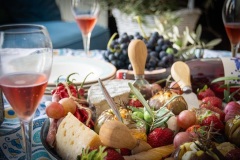
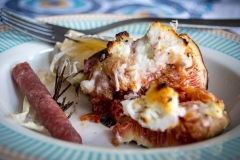
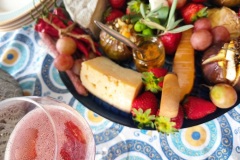
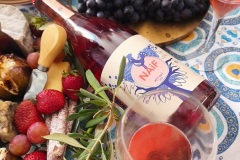
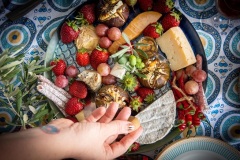


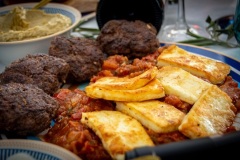
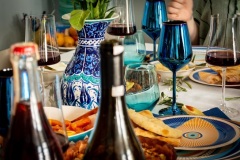
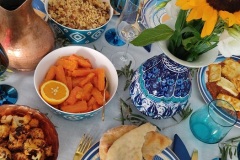
September 9, 2022
CAMILLA M MANN
Amazing spread! I think I might have to do a full Moroccan meal soon. Now if I could only get my hands on the wines you mention. They sound spectacular.
September 9, 2022
admin
Thank you!! I love doing Moroccan. It’s sooooo wine friendly. And I would hope the Liatiko at least might not be out of reach. Crete produces a huge amount of Greece’s wine so I feel like there *must* be some in the US.
September 9, 2022
Pingback: LODI RULES - Sustainability in Washington through the lens of Dineen Vineyards #WinePW | Crushed Grape Chronicles
September 9, 2022
robincgc
Your tables always look so stunning and inviting. I’m fascinated that this dark-skinned grape makes lighter-colored wines. I’m with Cam. Maybe she and I should start a movement to get Turkish wines to the US!
As to your spread. I’m drooling. I definitely will be trying that carrot recipe! I’m really craving Moroccan now!
September 9, 2022
admin
As always thank you, Robin! Coming from you and your fantastic photography, that’s always a great compliment! I really wish I could sent you all Turkish (or even Greek!) wine but stupid shipping laws…I still advocate for a Turkey field trip!!!
September 10, 2022
Lori
Love the stories behind the names of grapes. Even though there are different versions, always so interesting! All the food looks incredible.
September 10, 2022
admin
Grape names are always such fun to unravel!
September 11, 2022
Pingback: Back to School! A little Wine Education with #WinePW | Crushed Grape Chronicles